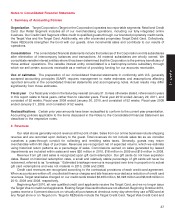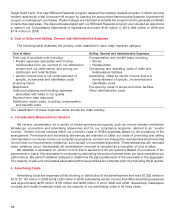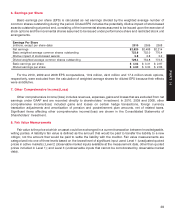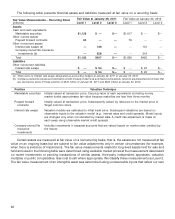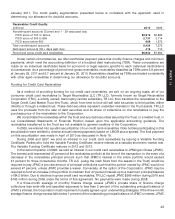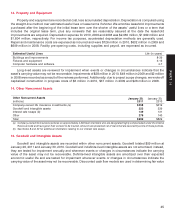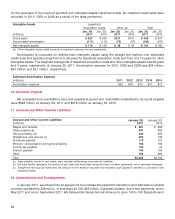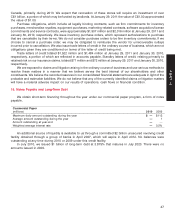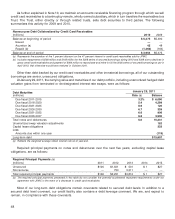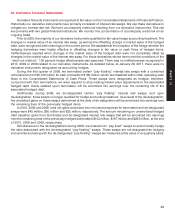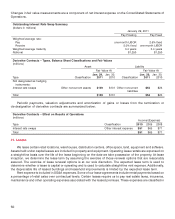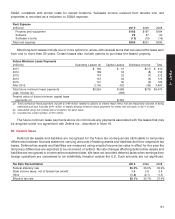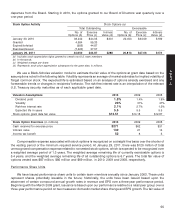Target 2010 Annual Report Download - page 69
Download and view the complete annual report
Please find page 69 of the 2010 Target annual report below. You can navigate through the pages in the report by either clicking on the pages listed below, or by using the keyword search tool below to find specific information within the annual report.
Canada, primarily during 2013. We expect that renovation of these stores will require an investment of over
C$1 billion, a portion of which may be funded by landlords. At January 29, 2011 the value of C$1.00 approximated
the value of $1.00.
Purchase obligations, which include all legally binding contracts, such as firm commitments for inventory
purchases, merchandise royalties, equipment purchases, marketing-related contracts, software acquisition/license
commitments and service contracts, were approximately $1,907 million and $2,016 million at January 29, 2011 and
January 30, 2010, respectively. We issue inventory purchase orders, which represent authorizations to purchase
that are cancelable by their terms. We do not consider purchase orders to be firm inventory commitments. If we
choose to cancel a purchase order, we may be obligated to reimburse the vendor for unrecoverable outlays
incurred prior to cancellation. We also issue trade letters of credit in the ordinary course of business, which are not
obligations given they are conditioned on terms of the letter of credit being met.
Trade letters of credit totaled $1,522 million and $1,484 million at January 29, 2011 and January 30, 2010,
respectively, a portion of which are reflected in accounts payable. Standby letters of credit, relating primarily to
retained risk on our insurance claims, totaled $71 million and $72 million at January 29, 2011 and January 30, 2010,
respectively.
We are exposed to claims and litigation arising in the ordinary course of business and use various methods to
resolve these matters in a manner that we believe serves the best interest of our shareholders and other
constituents. We believe the recorded reserves in our consolidated financial statements are adequate in light of the
probable and estimable liabilities. We do not believe that any of the currently identified claims or litigation matters
will have a material adverse impact on our results of operations, cash flows or financial condition.
19. Notes Payable and Long-Term Debt
We obtain short-term financing throughout the year under our commercial paper program, a form of notes
payable.
Commercial Paper
(millions) 2010 2009
Maximum daily amount outstanding during the year $— $112
Average amount outstanding during the year —1
Amount outstanding at year-end ——
Weighted average interest rate —0.2%
An additional source of liquidity is available to us through a committed $2 billion unsecured revolving credit
facility obtained through a group of banks in April 2007, which will expire in April 2012. No balances were
outstanding at any time during 2010 or 2009 under this credit facility.
In July 2010, we issued $1 billion of long-term debt at 3.875% that matures in July 2020. There were no
amounts issued in 2009.
47
PART II


